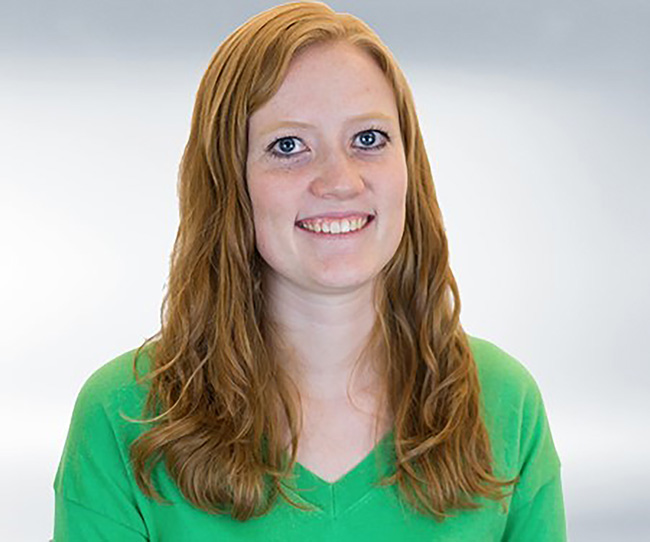Edited by Jenny Jones

After working as a full-time environmental engineer for eight years, Elyssa Dixon, P.E., M.ASCE, took a sabbatical to reevaluate the direction of her career and life. During that time, she deepened her mindfulness practice that, she says, made managing her mental health easier while also making her a better engineer.
Since then, Dixon has become a mindfulness coach who specializes in working with engineers and other problem-solvers. She focuses on the power of mindfulness to strengthen such skillsas communication, teamwork, leadership, self-awareness, and bias awareness.
Dixon spoke with Civil Engineering about what it means to practice mindfulness and how it can help engineers in particular.
What is mindfulness?
Although the definition of mindfulness varies, I like to reference the one created by Jon Kabat-Zinn, Ph.D., a scientist, author, meditation teacher, and the founder of the Mindfulness-Based Stress Reduction Clinic and the Center for Mindfulness in Medicine, Health Care, and Society. Kabat-Zinn describes mindfulness as “paying attention, on purpose, in the present moment, non-judgmentally.” He identifies three main tenets of mindfulness: being present, awareness, and suspending judgment.
Practicing mindfulness is similar to learning any new skill: You have to find what works best for you and practice over time. These practices can include meditation, gratitude exercises, or “inviting” mindful awareness into your daily routine (mindfully eating, brushing your teeth, washing your dishes, walking your dog, etc.).
Through a mindfulness practice, you create new neural pathways and rewire your brain to be more present, more aware, and more able to suspend judgment of yourself and others. Mindfulness practices can also reduce stress, improve memory, and increase cognitive flexibility and resilience.
Can you walk me through those three tenets?
Being present is probably the most understood element of mindfulness. The concept of being present (being in the here and now) is straightforward, but implementing this practice into your daily life can be challenging. We are constantly bombarded by distractions, and our minds are easily drawn in multiple directions. Remaining present is a skill that we can grow through mindfulness practices and one that ultimately improves our ability to focus, helps us keep our thoughts from spiraling, and allows us to enjoy each moment.
Awareness is the second main tenet of mindfulness. Mindfulness teaches us to be aware of our bodies and our emotions; we slow down when we meditate. Building this skill translates directly into how we treat ourselves and others — we learn how to extend more compassion and empathy with ourselves and ultimately to those around us. We are also better able to pause before we react to a situation, examine and understand our initial inclinations, and determine how we want to move forward rather than simply reacting.
Finally, suspending judgment is maybe the hardest of the three elements of mindfulness to recognize and implement. This component of mindfulness involves letting go of judgments of yourself and others. Through our mindfulness practice, we learn to simply notice with curiosity and an open mind like you are a scientist gathering data without knowing what result to expect. In the same way that self-awareness helps us with our interactions with others, letting go of judgment of ourselves means that we judge others less and recognize our biases. We are better able to accept the differences of our families, friends, and co-workers and see how these differences make our relationships and teams stronger.
What is the relationship between meditation and mindfulness?
Meditation is one way of practicing mindfulness and cultivating being present, suspending judgment, and increasing awareness. Meditations can include still practices like breathing exercises, body scans during which you notice sensations in your body, and mindfulness meditation during which you passively observe your thoughts and feelings or active practices like yoga or walking meditations.
Ultimately, a mindfulness practice involves a focal point (your breath, your body, the sensation of washing your dishes, etc.). Through the practice, you notice when your awareness shifts from the focal point and you invite that awareness back, releasing expectations (e.g., how you think something should be, how you think you should be, or how someone else should be, etc.) and judgments. Similar to learning any new skill, establishing a mindfulness practice takes effort as well as support from those with experience.
How does mindfulness relate to engineering and the engineer’s mind?
Engineers are problem-solvers, and an effective problem-solver incorporates communication, data collection and observation, and information synthesis. Mindfulness practices teach us to slow down, listen, reflect, accept (thoughts, others, actions, ourselves, etc.), and choose our next steps — ultimately leading to an open-minded process that results in better solutions.
Successful leaders and teams use mindfulness practice tools to develop and expand their problem-solving skills. This process includes improving interpersonal skills that embody respect, active communication, reduced bias in decision-making, and much more.
As stated earlier, mindfulness practices tap into the neuroplasticity of the brain, helping you to build new neural pathways. Mindfulness practices also enable you to better engage the prefrontal cortex — the problem-solving and planning center of the brain — helping you to reduce stress and manage your emotional responses.
How has mindfulness impacted you as an engineer?
Mindfulness has changed the way I look at problems and the way I interact with people. I have more empathy and patience, and I’m a more active listener. I’m able to generate ideas and solutions more effectively with internal teams.
Mindfulness has also increased my understanding and awareness of bias and changed the way I perceive the impact of civil engineering on communities. I’m better able to think holistically in developing a solution beyond just solving the immediate problem.
What are some practical steps that engineers can take to be mindful?
Mindfulness is about changing the way you approach each day and situation. The first step is to try a mindfulness practice as previously described to explore what works best for you. This doesn’t have to be a large time commitment every day. It can be little moments. For example, you can pause between meetings by bringing your awareness (your attention) into your body and breath.
Neuroscientist Amishi Jha, Ph.D., a professor of psychology at the University of Miami, conducted research — described in her 2021 book Peak Mind — indicating that 12 minutes of practice per day is the optimal minimum duration to see the benefits of a mindfulness practice. I recommend beginners start with a seated meditation because there are fewer distractions with this practice, so you can more easily experience the mindset of being present, growing your awareness, and suspending judgment.
What are some helpful resources for engineers who might want to start a mindfulness practice?
There are many apps that I really love, including Headspace, Calm, and Insight Timer. They all have guided meditations and resources to help you get started. If you’re looking to read research about mindfulness, you can find papers, books, articles, and podcasts online. I highly recommend Hidden Brain, which frequently references mindfulness practices.
In addition, engineers can visit my website. We look at the foundations of mindfulness and how to grow a practice, the connection between stress and mindfulness, and how to use a mindfulness practice to deepen leadership skills and emotional intelligence and cultivate a corporate culture of mindfulness. Another resource is to read the mindfulness series I wrote for Civil Engineering Source.
Jenny Jones is an award-winning freelance writer based in northern Virginia. She has more than 20 years of editorial experience and specializes in making complex subjects clear and engaging.
A version of this article first appeared in the March/April 2023 issue of Civil Engineering.



